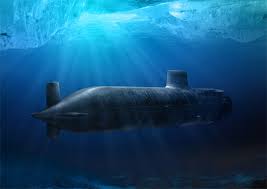
|
|
SUBSIM: The Web's #1 resource for all submarine & naval simulations since 1997
 |
SUBSIM: The Web's #1 resource for all submarine & naval simulations since 1997 |
|
|
 02-04-10, 11:08 PM
02-04-10, 11:08 PM
|
#1 |
|
Swabbie
 Join Date: Feb 2010
Posts: 5
Downloads: 0
Uploads: 0
|
Hi,
Anyone can tell me how to calculate submarine ESM and Early Warning RADAR detection ranges for nil, low, medium, heavy rain condition and also for different sea tide conditions  ? if you can give equation or any link which helps to find out this will be great ? if you can give equation or any link which helps to find out this will be great  . I have another basic doubt how the ships are detecting targets for away (beyond radar horizon)? . I have another basic doubt how the ships are detecting targets for away (beyond radar horizon)?Thank you.
__________________
Watch out. Enemy could be just under you. 
|

|

|
 02-22-10, 07:24 AM
02-22-10, 07:24 AM
|
#2 |
|
Commodore
 |
A book on electronic warfare would be the way to go!

|

|

|
 02-25-10, 08:26 AM
02-25-10, 08:26 AM
|
#3 |
|
Swabbie
 Join Date: Feb 2010
Posts: 5
Downloads: 0
Uploads: 0
|
I have just got Introduction to Radar Systems by skolnk and i am reading it. Thank you for your advice, i will have a look on electronic warfare books too.

__________________
Watch out. Enemy could be just under you. 
|

|

|
 02-25-10, 02:56 PM
02-25-10, 02:56 PM
|
#4 |
|
Commodore
 |
The one that i have is "Introduction to Electronic Defence Systems" by Filippo Neri
About 530p. Goes through pretty much all subjects, is well illustrated and also comes with lots of formulas. I think there are even more comprehensive treatments of this subject than this. But it's a very good start. Well, different radio frequencies are being reflected by one of the upper atmosphere layers of the earth. So what you do is to direct the radar antena somwhat upwards and use the upper atmosphere(i think it was the ionosphere or something) as a mirror for the radio waves to get behind the horizon. But i think this requires special radars or something. |

|

|
 02-27-10, 06:56 AM
02-27-10, 06:56 AM
|
#5 | ||
|
Swabbie
 Join Date: Feb 2010
Posts: 5
Downloads: 0
Uploads: 0
|
Quote:
Quote:
__________________
Watch out. Enemy could be just under you. 
|
||

|

|
 02-27-10, 05:06 PM
02-27-10, 05:06 PM
|
#6 |
|
Commodore
 |
|

|

|
 02-27-10, 07:10 PM
02-27-10, 07:10 PM
|
#7 |
|
Bosun
 Join Date: Jan 2009
Posts: 68
Downloads: 28
Uploads: 0
|
Wikapedia:" The most common method of constructing an OTH radar is the use of ionospheric reflection. Given certain conditions in the atmosphere, radio signals broadcast up towards the ionosphere will be reflected back towards the ground. After reflection off the atmosphere, a small amount of the signal will reflect off the ground back towards the sky, and a small proportion of that back towards the broadcaster. Only one range of frequencies regularly exhibits this behaviour: the High Frequency (HF) or Shortwave part of the spectrum from 3 – 30 MHz. Given certain conditions in the atmosphere, radio signals in this frequency range will be reflected back towards the ground. The "correct" frequency to use depends on the current conditions of the atmosphere, so systems using ionospheric reflection typically employ real-time monitoring of the reception of backscattered signals to continuously adjust the frequency of the transmitted signal. Given the losses at each reflection, this "backscatter" signal is extremely small, which is one reason why OTH radars were not practical until the 1960s, when extremely low-noise amplifiers were first being designed."
ChristopherT |

|

|
 |
|
|
